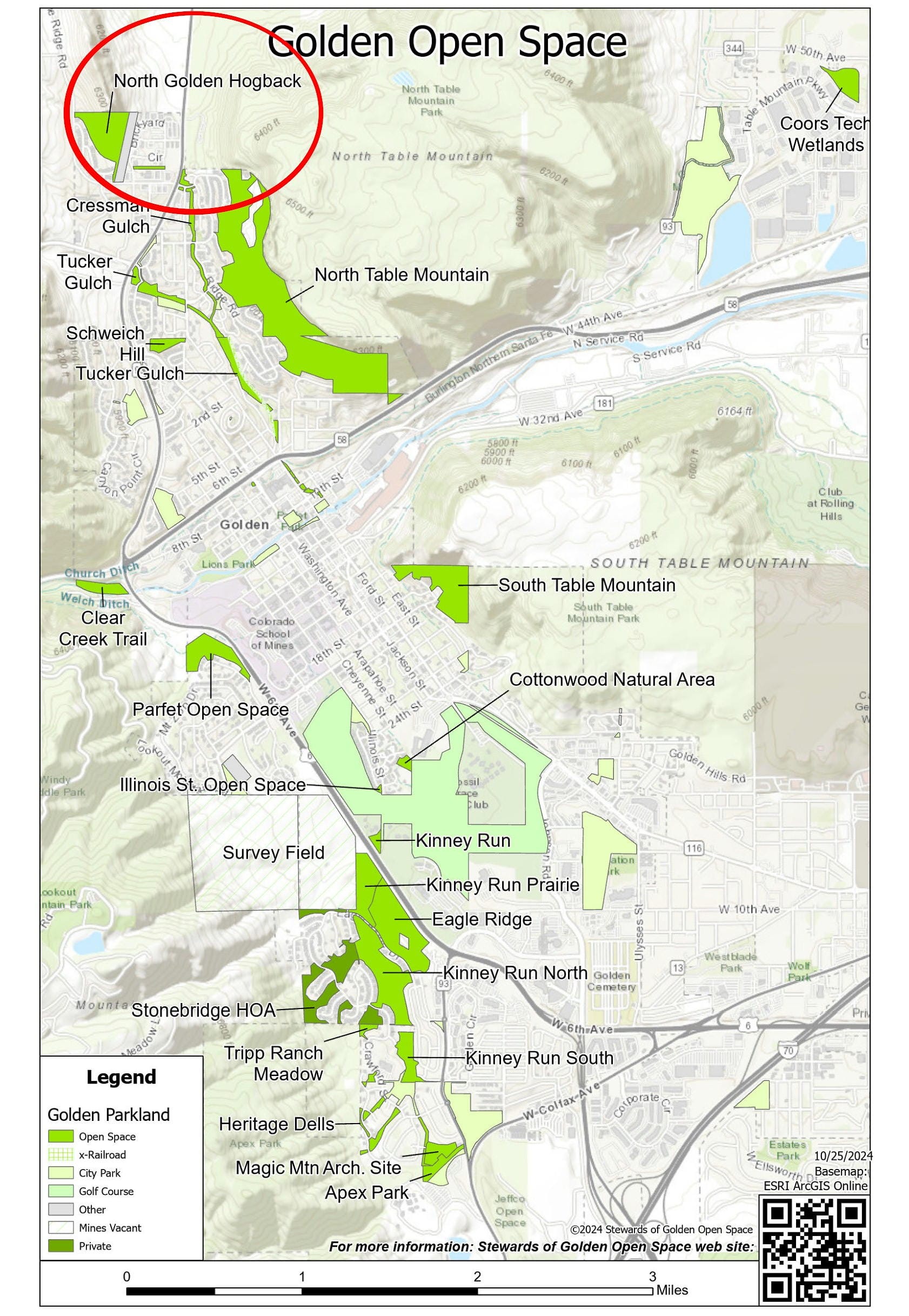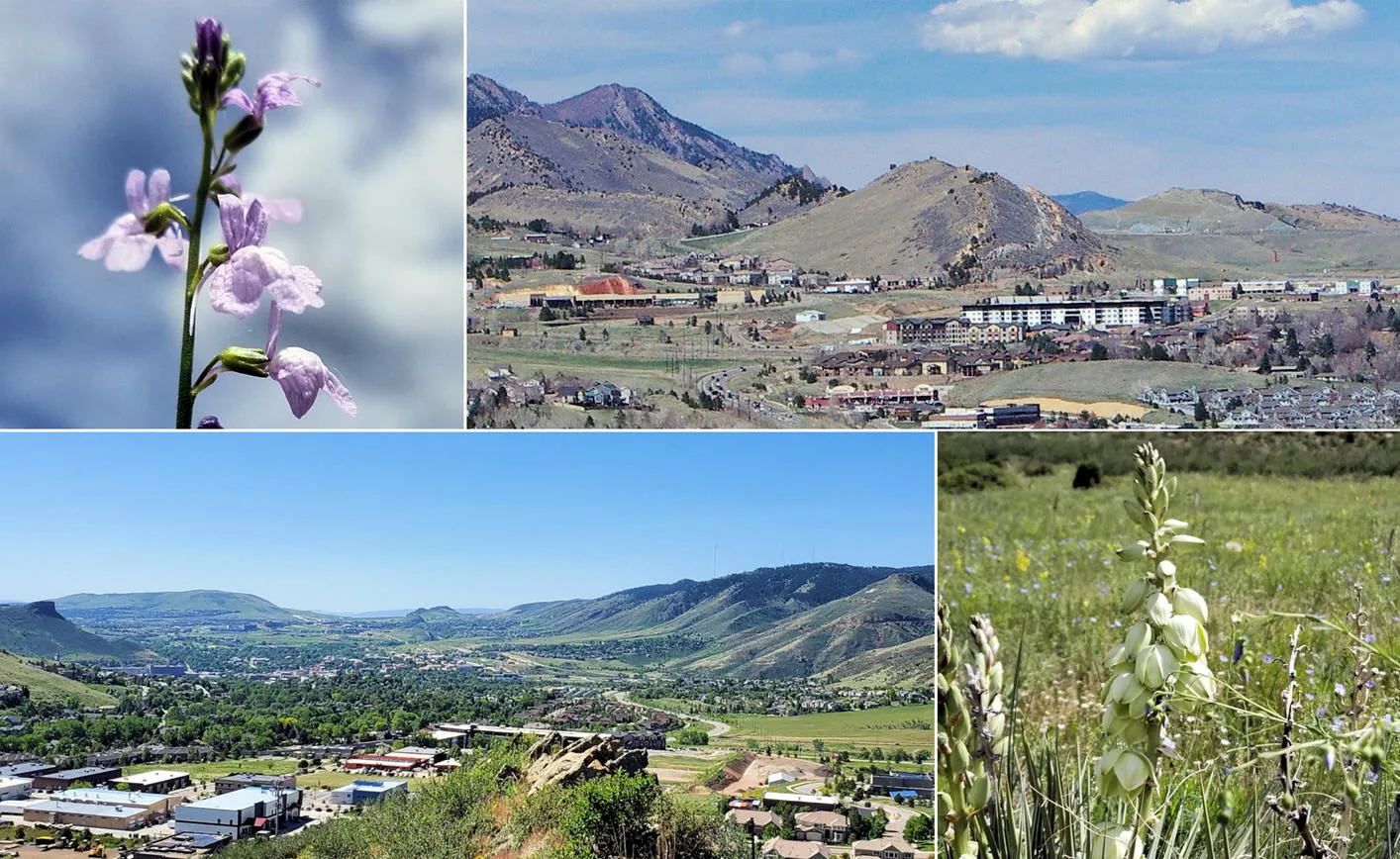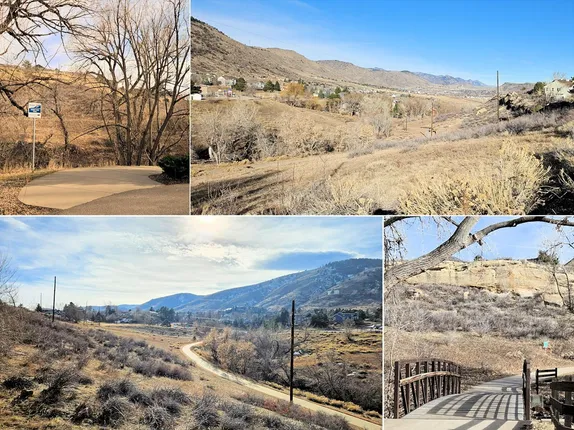By Tom Schweich
You may know that the City of Golden is revising our current Parks & Recreation Plan and writing our first Open Space Master Plan (https://www.guidinggolden.com/path-to-play). While Golden owns about 400 acres of Open Space, a challenge is distinguishing between Golden’s little bit of Open Space and the 57,000 acres of Jefferson County Open Space. Here is a description of one of about fifteen City of Golden Open Spaces.

North Golden Hogback is at the northern city limits between Colorado Highway 93 and Pine Ridge Road. North Dakota Hogback is a little more than 28 acres in size, but about 7 acres of that is reserved for the future realignment of Colorado Highway 93. In addition, about 4 acres are fenced and prohibited for public use because of unstable and hazardous conditions.
The structure of North Dakota Hogback is primarily Morrison Formation and Dakota Formation rocks of Jurassic and Cretaceous ages (100-160 million years old) that were tilted up vertically by uplift of the Rocky Mountain Front Range.
Between the tilted-up layers of sandstone were layers of high-quality fire clay that can be used in a variety of porcelain and ceramic applications. Mining of the clay from the hogback began possibly as early as 1866, and there is still interest in mining these deposits. The highly observable trench scars from the early mining days of this fire clay can be seen from Colorado Highway 93.
Somewhat ironically, mining the clay exposed previously unknown fossil crocodile and bird tracks. The original finds date from the 1930's but more recently paleontologists rediscovered the site and found more fossil bird and crocodile trackways and dinosaur footprints. The palaeontologic importance of these fossil tracks led to the inclusion of North Golden Hogback into the Morrison-Golden Fossil Areas National Natural Landmark. Unfortunately, the fossil tracks cannot be opened to the public because they are on unstable vertical walls of fractured sandstone.
City-maintained trail access to the North Golden Hogback Open Space is limited to a perimeter trail that runs along the west side of Cressman Gulch and separates the open space from the Canyon View residential neighborhood. Social trails on the east side of the hogback take hikers past interesting rock formations and mining tunnels left from another era.
The vegetation of North Dakota Hogback is a Foothills Scrub with a few ponderosa pines along the top, mixed-grass prairie on the western slope, and dry riparian in Cressman Gulch. There are 86 species of plants known on the Dakota Ridge site including good cactus biodiversity. Also found is “Blue Flax” — Linaria canadensis (L.) Dum.-Cours. var. texana (Scheele) Pennell, shown at top left. There is only one other collection of this plant in Golden, made in 1915 along the railroad tracks of present-day 8th Street.
Given its relatively isolated location and proximity to the foothills, it should be expected that this area will be home to large and small mammals, and a broad range of bird species, like those found on North Table Mountain nearby.
References
Anderson, Donna S. and Paul B. Haseman. 2021. Golden Rocks: The Geology and Mining History of Golden, Colorado, Golden, Colorado.
Houck, Karen J., Martin G. Lockley, Megan Caldwell, and Brandon Clark. 2010. A well-preserved Crocodylian trackway from the South Platte Formation (Lower Cretaceous), Golden Colorado. Crocodyle tracks and traces. Bulletin 51. 2010.
Lockley, Martin, Karen Chin, Masaki Matsukawa, and Reiji Kukihara. 2009. New interpretations of Ignotornis, the first-reported Mesozoic avian footprints: implications for the paleoecology and behavior of an enigmatic Cretaceous bird. Cretaceous Research. 30: 1041-1061.
National Park Service. 2024. Morrison-Golden Fossil Areas, National Natural Landmark.
Stewards of Golden Open Space. 2019-2024. North Golden Hogback Open Space. https://stewardsofgolden.org/north-golden-hogback









